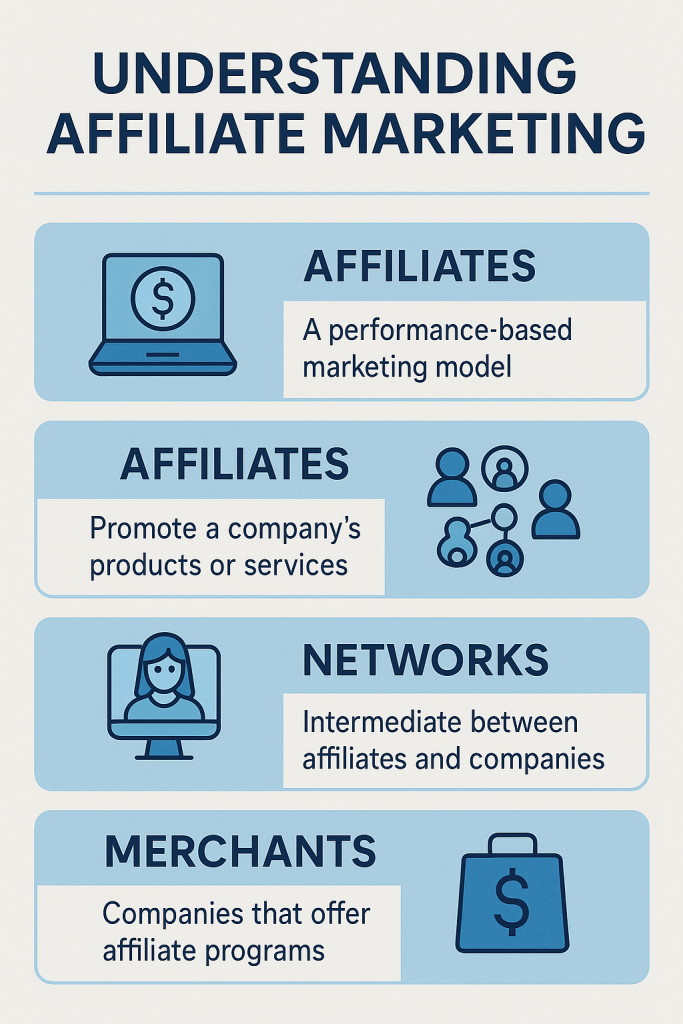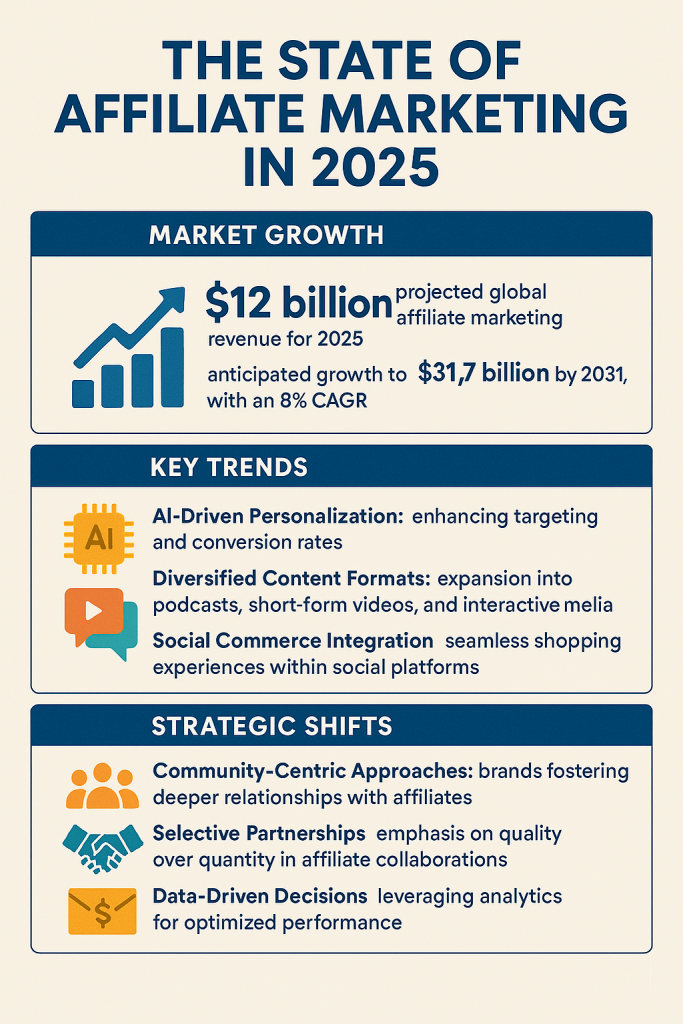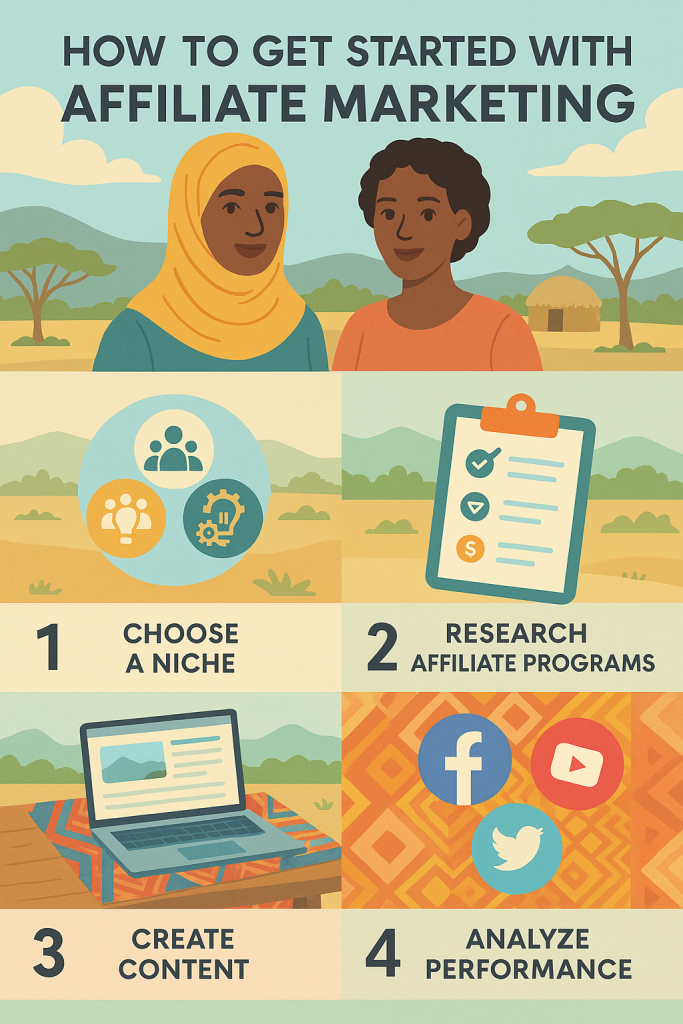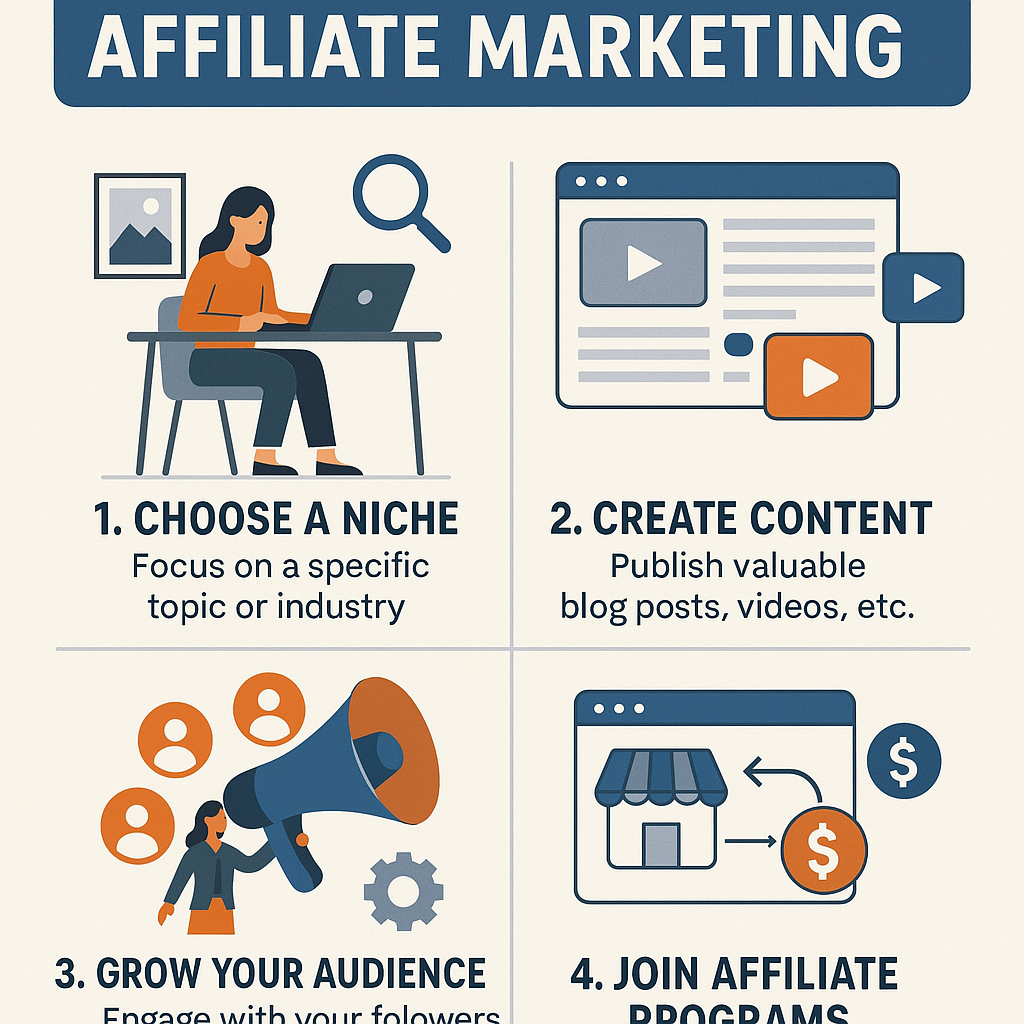
Affiliate marketing is a performance-based marketing strategy where a business rewards third-party affiliates for generating traffic or sales through the affiliate’s marketing efforts. As we approach 2025, the significance of affiliate marketing is poised to increase dramatically. In today’s economy, where job security is waning and the gig economy is flourishing, passive income streams are more crucial than ever. Many are looking for ways to supplement their income without the constraints of traditional employment. This blog post aims to guide readers on how to effectively start earning through affiliate marketing in 2025.
Understanding Affiliate Marketing

1.1 What is Affiliate Marketing?
Affiliate marketing can be defined as a marketing arrangement where an online retailer pays commission to an external website for traffic or sales generated from its referrals. The key components of affiliate marketing include:
- Merchants: The companies that create products or services.
- Affiliates: Individuals or companies that promote the merchant’s products in exchange for a commission.
- Consumers: The end-users who purchase the products or services through the affiliate links.
The mechanics of affiliate marketing are simple: an affiliate joins an affiliate program, receives a unique tracking link, and promotes the merchant’s products. When a consumer clicks on that link and makes a purchase, the merchant tracks the sale and compensates the affiliate accordingly.
1.2 Benefits of Affiliate Marketing
Affiliate marketing offers numerous advantages for both merchants and affiliates:
- Low Startup Costs: Unlike starting a traditional business, affiliate marketing requires minimal investment. An internet connection and a device to promote products are all you need.
- Flexibility and Scalability: Affiliates can work from anywhere and at any time. As your audience grows, so does your potential to earn. You can scale your efforts without significant additional investments.
- Potential for Passive Income: Once established, affiliate marketing can generate income with little ongoing effort. This ongoing revenue stream is particularly enticing for those looking to build wealth over time.
The State of Affiliate Marketing in 2025

As we move into 2025, affiliate marketing is evolving rapidly. Some of the current trends include:
- Growing Industries: E-commerce continues to dominate the affiliate marketing landscape, with digital products (like online courses and software) also gaining traction. These sectors offer lucrative opportunities for affiliates.
- Social Media and Influencers: Social media platforms like Instagram, TikTok, and YouTube have become critical avenues for affiliate promotions. Influencers with large followings can drive significant traffic and sales for merchants through authentic recommendations.
Looking ahead, several technological advancements and shifts in consumer behavior are expected to shape the future of affiliate marketing:
- Technological Advancements: The rise of AI and machine learning is likely to enhance targeting and personalization in affiliate marketing. These technologies can facilitate better matchups between affiliates and the right products for their audiences.
- Changes in Consumer Behavior: Consumers are increasingly seeking authenticity and transparency. This shift may drive affiliates to focus on building genuine relationships with their audiences rather than solely pushing products.
Getting Started with Affiliate Marketing

Selecting the right niche is crucial for success in affiliate marketing. Here are some considerations:
- Passion: Choose a niche you are genuinely interested in. Your enthusiasm will come through in your content, making it easier to engage your audience.
- Researching Profitable Niches: Use tools like Google Trends, Keyword Planner, and social media insights to identify niches with high demand and low competition. Look for emerging trends that you can capitalize on.
3.2 Finding the Right Affiliate Programs
Once you’ve identified your niche, the next step is finding suitable affiliate programs. Popular programs include:
- Amazon Associates: One of the largest and most reputable affiliate programs, offering a vast range of products.
- ShareASale: A platform that connects affiliates with thousands of merchants across various industries.
- ClickBank: Known for digital products, ClickBank allows affiliates to earn high commissions.
When choosing an affiliate program, consider factors such as commission structure, payment methods, product relevance to your niche, and the quality of support provided.

4.1 Creating a Website or Blog
A professional website or blog is essential for promoting your affiliate products effectively. Here are the steps to set up:
- Domain Name: Choose a catchy and relevant domain name that reflects your niche.
- Web Hosting: Select a reliable web hosting service to ensure your site is always accessible.
- Content Management System: Use platforms like WordPress to manage and create content easily.
Once your site is set up, focus on creating high-quality content that provides value to your readers. This content will not only attract visitors but also establish your credibility as an affiliate.
4.2 Utilizing Social Media and Email Marketing
Social media and email marketing are powerful tools for promoting affiliate products:
- Social Media Strategies: Share engaging content, conduct giveaways, and post reviews about the products you promote. Utilize platforms like Instagram for visual content and Twitter for quick updates.
- Email Marketing: Build an email list by offering a freebie related to your niche. Use email campaigns to share valuable insights and promote your affiliate products directly to interested subscribers.
Effective Promotion Strategies

5.1 Content Creation Techniques
Creating compelling content is key to driving traffic and conversions. Here are some content types that work well:
- Blogs: Write informational blog posts that address common pain points and include affiliate links naturally.
- Videos: Create product reviews or tutorials on platforms like YouTube to reach a broader audience.
- Reviews: Develop in-depth reviews of products to help consumers make informed decisions, increasing the likelihood of a purchase through your affiliate link.
Search engine optimization (SEO) is crucial for driving organic traffic to your site. Here are some basic strategies tailored for affiliate marketing:
- Keyword Research: Identify keywords related to your niche that have high search volume and low competition.
- On-Page SEO: Optimize your content with relevant keywords, meta tags, and engaging headlines to improve visibility.
- Link Building: Build backlinks from reputable sites to enhance your website’s authority and search rankings.
Measuring Success and Adapting Strategies Affiliate Marketing

6.1 Tracking Performance Metrics
To understand the effectiveness of your affiliate marketing efforts, it’s essential to track key performance indicators (KPIs), including:
- Click-Through Rate (CTR): The percentage of people who clicked on your affiliate links compared to those who viewed your content.
- Conversion Rate: The percentage of visitors who made a purchase after clicking on your affiliate link.
- Return on Investment (ROI): Calculate the profitability of your affiliate marketing campaigns by comparing revenue generated against costs incurred.
6.2 Continuous Learning and Adaptation
The affiliate marketing landscape is constantly evolving. To stay ahead, consider the following:
- Stay Updated: Follow industry blogs, attend webinars, and participate in online courses to keep up with the latest trends and techniques.
- Adapt Strategies: Regularly analyze your performance metrics and adjust your strategies based on what works best for your audience.
As we look toward 2025, affiliate marketing presents a compelling opportunity for individuals seeking to generate passive income. With low startup costs and the potential for scalable earnings, it is an accessible avenue for anyone willing to put in the effort. By understanding the fundamentals, choosing the right niche, building a robust platform, and employing effective promotion strategies, you can start your journey in affiliate marketing today. Don’t hesitate—explore the opportunities that await you and begin your path to financial freedom!

